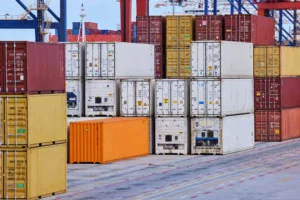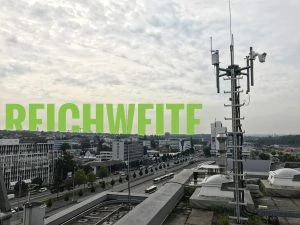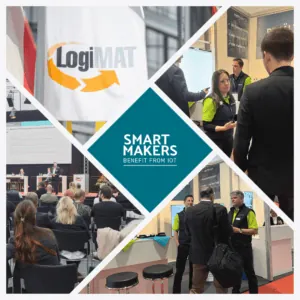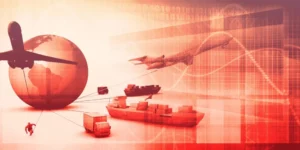Inflation is rapidly changing consumer behavior and the market as a whole. People now prefer to eat at home, save on electricity and gasoline and shop more consciously. As purchasing power erodes sales, some business owners are increasingly looking to cut costs to stay afloat. Learn more about how implementing automation tools like IoT remote monitoring can save your business time and money and protect your inventory.
What is IoT remote monitoring and what is it used for?
Electricity costs are a growing problem nowadays, not only for private households but also for companies. The use of IoT control platforms for automated monitoring and control systems for electrical equipment, including fault management, ensures cost-effective and efficient operation of equipment. These platforms can provide solutions for more efficient use of electricity and other resources, as well as improving personal safety.
End devices communicate with the cloud operator via the Internet. These devices use wireless or powerline communication to provide intelligent control.

IoT-Remote monitoring systems can use long-haul, medium-haul and short-haul data transmission or a combination of all. The management of a IoT device is generally independent of the type of production plant, the IoT controller and the type of communication network.
IoT-Remote monitoring platforms are equipped with intelligent functions that help solve the following tasks:
- Real-time analysis
- Manage multiple IoT devices
- Connection management
- Data acquisition in the cloud or locally
- Cyber Security
The introduction of IoT remote monitoring helps companies to save money and resources in various areas. The most important applications of this technology are presented below.
How can IoT remote monitoring reduce costs in various industries?
The Internet of Things promises to transform today's industries. The value for companies can be enormous, from the digitalization of internal processes and customer service to the development of disruptive digital products and business models. In the near future, i.e. by 2030, IoT could create up to 13 trillion dollars in economic value annually.
Remote monitoring with IoT has many different applications. For example, IoT sensors can be used to monitor events or changes to building structures, bridges and other infrastructure.
With a IoT remote monitoring system, you can dynamically adjust the light intensity by increasing or decreasing the lighting at any location at different times of the day according to business hours, the weather or an unexpected event.
IoT-enabled remote monitoring improves occupational safety by detecting power failures more quickly, increasing lighting in high-risk areas or reacting to changing conditions. But in which areas is IoT remote monitoring already being actively used? Below you will find some examples.
Cities and municipalities
Remote monitoring improves pedestrian safety by detecting power outages on streets. At the same time, this technology enables municipalities to automatically increase lighting in areas with poor visibility, high crime rates, or in response to changing weather conditions.
Intelligent remote control reduces energy consumption and operating costs. Cities and municipalities that have implemented these solutions are seeing significant energy savings.
Pharmaceutical industry and healthcare
Medication temperature monitoring apps uses sensors to determine if the temperature of the medication is out of range. This ensures that medicines continue to meet quality standards during storage and delivery.

Maintaining a constant storage temperature is crucial for the effectiveness of the medicine. This is particularly important for vaccines. Here, intelligent IoT-based applications can be used to monitor storage temperatures and remind patients to take their medication on time.
Gastronomy and restaurant business
The IoT remote monitoring system will enable restaurant operators to monitor business-critical elements such as inventory, refrigeration and HVAC (heating, ventilation and air conditioning) from anywhere and at any time. IoT-Sensors and monitoring systems in restaurants measure the temperature and humidity in cold rooms, which ultimately helps to prevent losses and improve compliance with food regulations. Because the data is stored 24/7 and easily accessible, these systems allow restaurant operators to identify which equipment needs maintenance before a major failure occurs.
Airlines and aircraft maintenance
The equipment tracking app provides the airline's technicians with a real-time overview of the location of each piece of maintenance equipment. The IoT remote monitoring system not only increases the efficiency of engineers, but also leads to significant cost savings and process improvements, which ultimately translates into greater reliability and punctuality of flights.
Agriculture and greenhouses
Thanks to IoT remote monitoring in agriculture, most business processes can be optimized. For example, a manufacturer of garden lighting has implemented a smart application that uses IoT sensors and predictive analytics to perform predictive maintenance and optimize lighting, energy consumption and photosynthesis. The IoT application has transformed the company from a manufacturer of lighting systems to a service provider for the optimization of greenhouses.
Factory operation and production
Factories and plants in the chemical, water and wastewater, pulp and paper, and other industries are known for their massive process piping networks controlled by thousands of valves. Until recently, these systems were operated with various types of manually operated valves.
The IoT remote monitoring of these manually operated valves helps to keep industrial plants competitive, improve production efficiency, optimize processes, avoid unnecessary downtime and increase occupational safety.

How can you get the most out of IoT remote monitoring?
In recent decades, digital technologies have evolved rapidly. From the age of mechanization to automation, factories and production have made a huge leap. Today, with the introduction of cyber-physical systems and networks in industry, they have gone one step further.
The introduction of IoT remote monitoring can lead to savings in capital and operating costs for factories and plants. Here are the key points to consider if you want to implement this technology in your business:
- Choose a system that is compatible with multiple types of equipment from different manufacturers to reduce equipment costs and simplify equipment procurement.
- Avoid further costly software adaptations for industrial communication protocols. IoT-Sensors are integrated directly into the central control system via a simple interface.
- Installation on your plant should be quick and easy. No cables are required and the system can be delivered fully pre-configured. This reduces deployment and operating costs when thousands of devices are involved.
- Position, temperature and other data changes can be communicated to your control system, allowing you to quickly adjust your factory processes to optimal performance levels.
By keeping information about all positions and the condition of the equipment up to date, you can prevent accidents and increase occupational safety in the company. You can also prevent environmental damage by ensuring that no hazardous substances are released from the plant.
IoT-Remote monitoring can save your company money
Remote monitoring with IoT capability offers enormous advantages in various areas. By choosing a reliable service provider, you save resources, increase safety and optimize your production processes.
Remote monitoring systems and industrial IoT wireless technologies can enable significant cost savings in production facilities by providing simple but reliable solutions with an optimal cost-benefit ratio.






